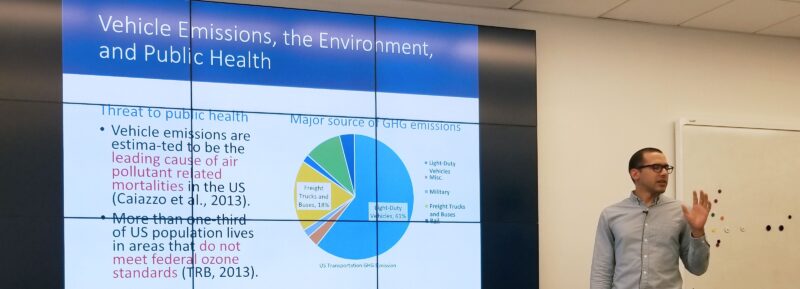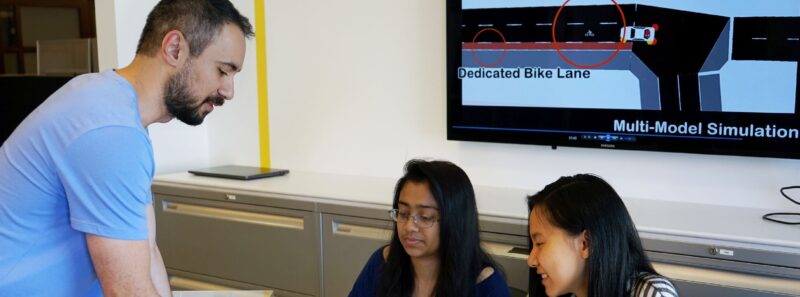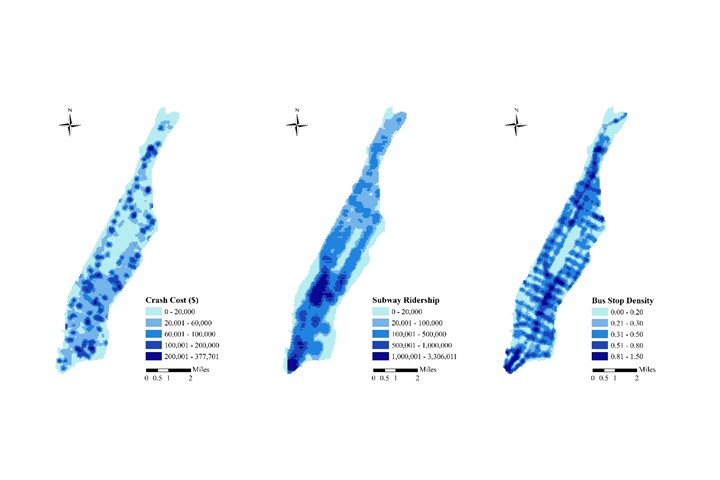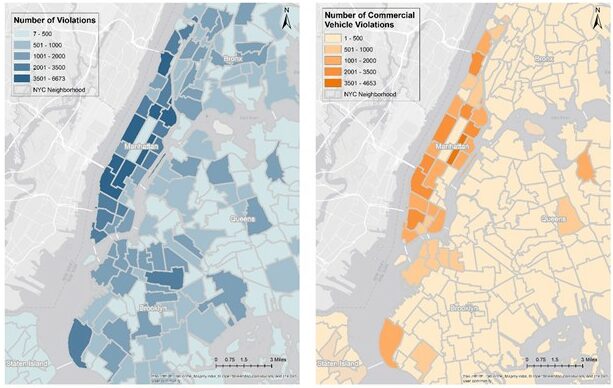Recent News
Recent Papers
-
Analysis of Pedestrian Safety Using Big Data
This study explores the potential of using big data including taxi trip, subway turnstile, road network, land use, socio-demographic data in advancing the pedestrian safety analysis including the investigation of contributing factors and the hotspot identification. A tobit model is developed to relate grid cell-specific contributing factors to crash costs which are left-censored at zero. The potential for safety improvement (PSI) which could be obtained by using the actual crash cost minus the cost of “similar” sites estimated by the tobit model was used as a measure to identify and rank pedestrian crash hotspots. -
Modeling Double Parking Impacts
Double parking is one of the key contributors to traffic congestion on urban streets. This study utilizes parking violation records for New York City along with field data collected using video recording, and adopts a comprehensive modeling approach that combines available data with two types of models: M/M/∞ queueing model and micro-simulation model. It can provide traffic agencies a potential approach to quantify the impact of double parking in a large-scale network and insights into the management and alleviation of on-street parking problems including incentives for encouraging off-hour deliveries and more effective enforcement during peak hours.
-
Human Mobility Study based on Geo-Located Twitter Data
The role of location in digital world has changed as expanding numbers of internet users including location information to their posts and these digital footprints allowed researchers to study the spatial and temporal characteristics of human activity and mobility patterns. This paper introduces an approach to collecting and utilizing geo-located Twitter status updates to report a quantitative assessment of human mobility. The results show that Twitter users follow the “Lévy Flight” mobility patterns. Moreover, the estimated mobility flows are found to be similar to the ground-truth data obtained from NYMTC Regional Household Travel Survey.
Faculty And Staff
Our Partners












